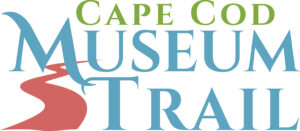The Cape Cod Museum of Natural History is far more than a museum.
Among its treasures is the lower-level aquarium. A recent survey of visitors there chose the aquarium as their favorite feature of Cape Cod’s Nature Place.
A close second is the hiking trails that make the museum not only a rainy-day locale.
These trails on Wing’s Island and its salt marsh introduce you to the many geographical dimensions of the Cape from forest to mudflats.
Wing’s Island is named after colonial settler John Wing. The adjacent salt marsh provided a rich environment for both Native Americans and European settlers.
The bay waters were teeming with fish, and the woods were filled with plants and animals.
After 1700, salt hay was farmed, and in the 1800s, salt was prodcued on the west side of the island (don’t expect a wide expanse of water separating the island).
When you walk Wing’s Island, here’s what you will encounter:
Upland Edges
The tall grass and woody thickets along the edges of the salt marsh provide excellent cover for birds and animals.
High Salt Marsh
Twice a day, the tides provide nutrients and sediment to the salt marsh, which supports a rich and diverse community of plants and animals.
Upland Forest
This was a meadow until the early 1900s. When clearing stopped, eastern red cedar soon appeared, follwed by pitch pine an doaks. The changes illustrate the dynamics of plant successions.
Sachemas’ Field
The stones in this abandoned field are arranged in a pattern similar to what Native Americans might have used to mark time. Sun-loving plants such as asters thrive in the field.
Meadow
In 2004, this area was cut over with the hope that woody plants would be discouraged and meadow plants and animals could thrive.
This ecosystem, which crosses the marsh, the dunes and the flats is home to crabs, tiny fish and microscopic creatures.
Dune Community
The sand is the harshest environment of them all, with very little protection from wind, salt and temperature fluctuations. The wrack line is the collection of debris that marks the high tide line. Sandpipers and plovers, as well as fox and skunk find their nourishment here.
Paines Creek
Known as Stony Brook on the other side of Route 6A, this is the stream that the herring take from Cape Cod Bay to reach the Mill Ponds where they spawn.
When you visit the museum, ask for a map. Then, identify each of these diverse ecosystems during your walk.

Leave A Comment